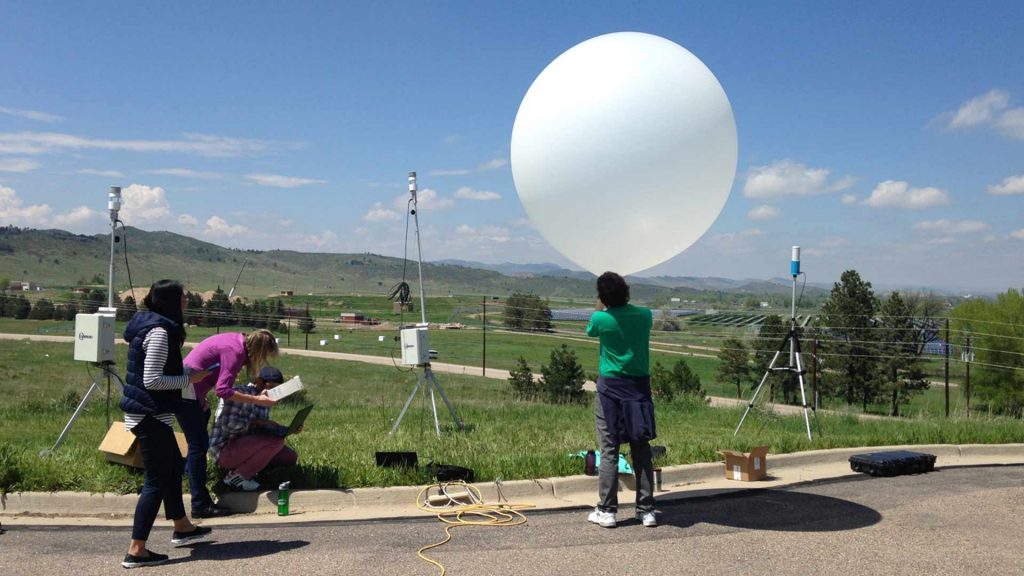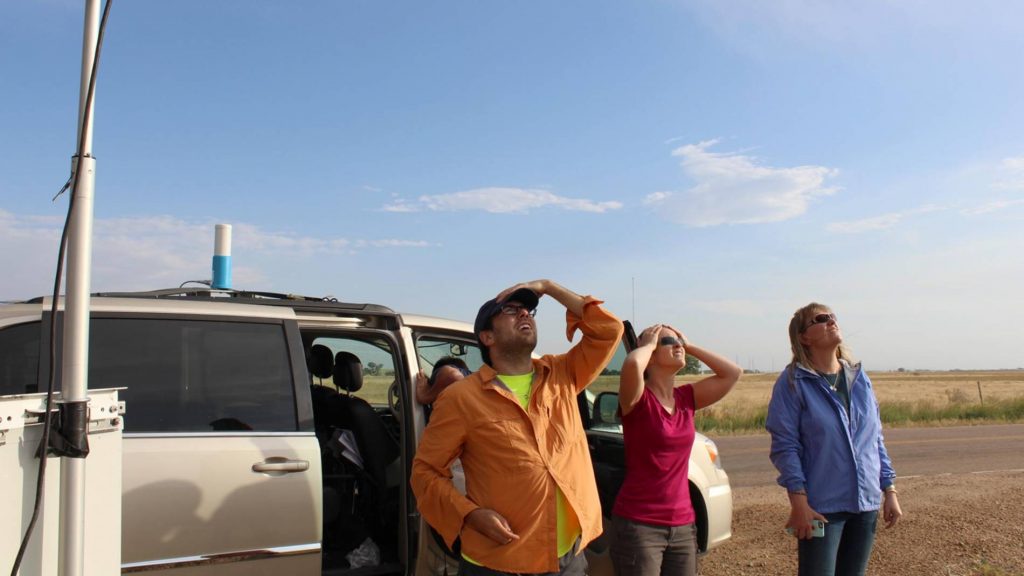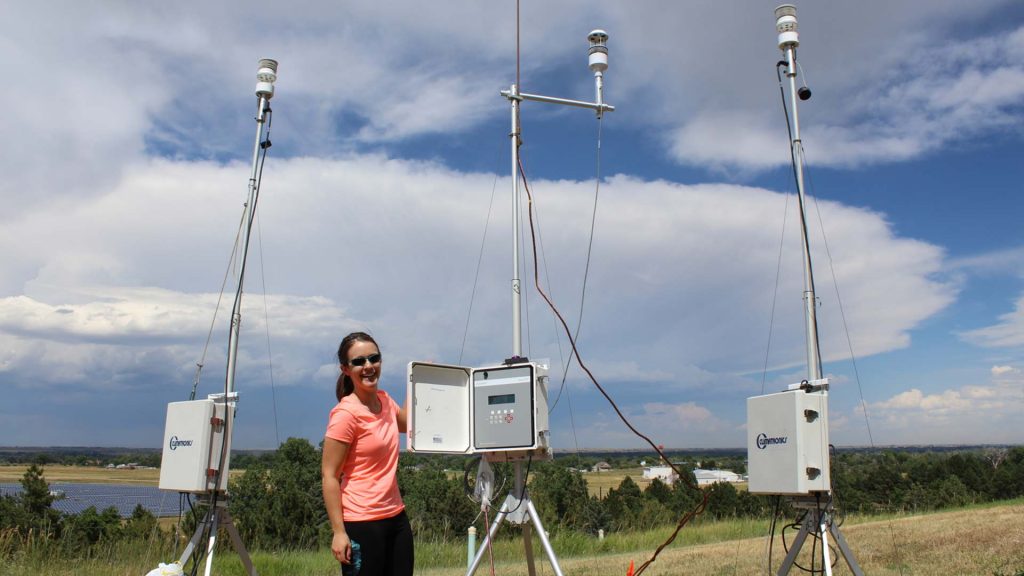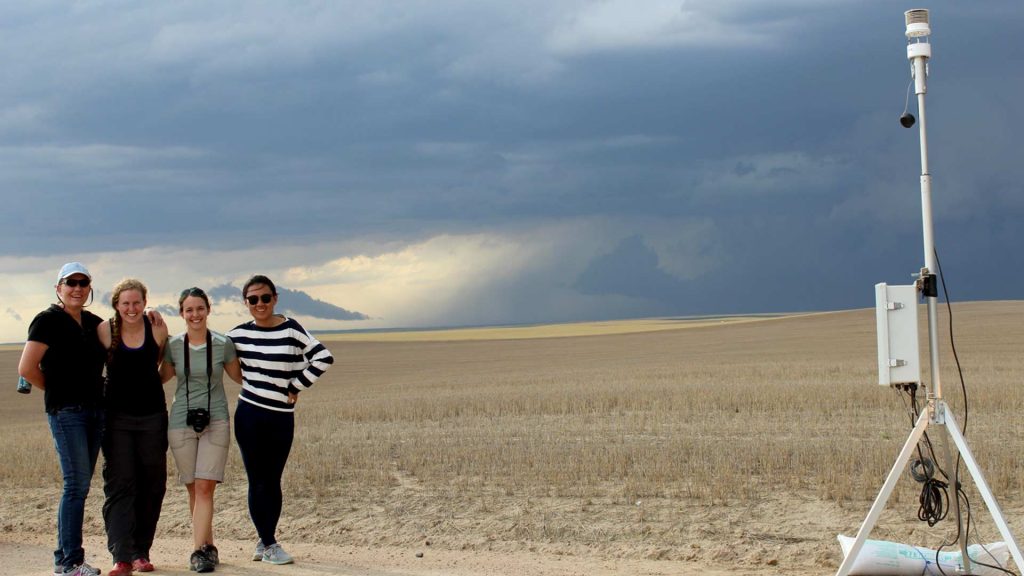Picture: A drone takes off as part of the flying curtain strategy to measure updrafts and cold pools in storms. Credit: All pictures and videos Colorado State University.
The intensity of thunderstorms is driven in part by the strength of their updrafts and cold pools. Despite the importance of these storm features, they can be poorly represented in numerical models, like those used to predict future weather and climate. This has been attributed to model parameterizations, grid resolution, and the lack of appropriate observations needed to evaluate such simulations.
The overarching goal of the Colorado State University Convective CLoud Outflows and UpDrafts Experiment (C3LOUD-Ex) was to enhance our understanding of deep convective storm processes and how they are represented in numerical models. To address this goal, a field campaign was conducted during July 2016 and again in May–June 2017 over northeastern Colorado, southeastern Wyoming, and southwestern Nebraska.
Pivotal to the experiment was a novel “Flying Curtain” strategy. This flying curtain was designed around simultaneously employing a fleet of uncrewed aerial systems (UAS; or drones), high-frequency radiosonde launches, and surface observations. Together these allowed the researchers to obtain detailed measurements of the area of cold pools and how long they lasted. Updraft velocities were observed using targeted radiosondes and radars.
Extensive datasets were successfully collected for 16 cold pool–focused and seven updraft-focused case studies.
The updraft characteristics for all seven supercell updraft cases were compared and provided a useful database for model evaluation. An overview of the 16 cold pools’ characteristics was also acquired, and an in-depth analysis of one of the cold pool cases suggests the variations in cold pool properties occur on spatial scales of 100m to 1 km. The processes responsible for the cold pool observations were then explored by the researchers and were found to support recent results from high-resolution numerical models.
You can find stories about the C³LOUD-Ex by Colorado State University here:
- Video: Drones weather the storm.
- C³LOUD-Ex gives scientists a closer look for more accurate predictions.
- Paper: van den Heever, Susan C., Leah D. Grant, Sean W. Freeman, Peter J. Marinescu, Julie Barnum, Jennie Bukowski, Eleanor Casas, Aryeh J. Drager, Brody Fuchs, Gregory R. Herman, Stacey M. Hitchcock, Patrick C. Kennedy, Erik R. Nielsen, J. Minnie Park, Kristen Rasmussen, Muhammad Naufal Razin, Ryan Riesenberg, Emily Riley Dellaripa, Christopher J. Slocum, Benjamin A. Toms, and Adrian van den Heever. ” The Colorado State University Convective CLoud Outflows and UpDrafts Experiment (C3LOUD-Ex)”, Bulletin of the American Meteorological Society 102, 7 (2021): E1283-E1305, https://doi.org/10.1175/BAMS-D-19-0013.1




